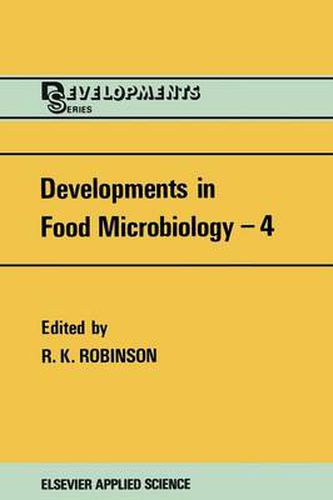Readings Newsletter
Become a Readings Member to make your shopping experience even easier.
Sign in or sign up for free!
You’re not far away from qualifying for FREE standard shipping within Australia
You’ve qualified for FREE standard shipping within Australia
The cart is loading…






This title is printed to order. This book may have been self-published. If so, we cannot guarantee the quality of the content. In the main most books will have gone through the editing process however some may not. We therefore suggest that you be aware of this before ordering this book. If in doubt check either the author or publisher’s details as we are unable to accept any returns unless they are faulty. Please contact us if you have any questions.
There is no doubt that this volume, like its predecessors, contains some outstanding reviews of topics of immediate relevance to food microbiolo gists. Current views on botulism or the detection of mycotoxins are obvious examples, while the authoritative discussion of culture systems for the dairy industry will be widely welcomed by those concerned in any way with the fermentation of milk. The theme of fermentation is explored further with respect to the use of immobilised enzymes, as is its potential role in the disposal of wastes from the food processing industries. A timely plea that biologists should adopt a more imaginative approach to food fermentations provides an apposite conclusion. For as microbiologists become increasingly involved with the minutiae of the subject, so it becomes all too easy to overlook the basic patterns of behaviour that can be observed in natural ecosystems. Yet to ignore this fund of knowledge could, in the long term, prove to be an omission of fundamental significance. In conclusion, I would like to acknowledge, with gratitude, the diligence and cooperation of the contributors, as well as the enthusiastic support of the publisher, for it is their efforts that have made this volume into such an attractive source of information for students of food microbiology. R. K. ROBINSON v CONTENTS Preface v List of Contributors IX Mushrooms from Waste Materials 1.
$9.00 standard shipping within Australia
FREE standard shipping within Australia for orders over $100.00
Express & International shipping calculated at checkout
This title is printed to order. This book may have been self-published. If so, we cannot guarantee the quality of the content. In the main most books will have gone through the editing process however some may not. We therefore suggest that you be aware of this before ordering this book. If in doubt check either the author or publisher’s details as we are unable to accept any returns unless they are faulty. Please contact us if you have any questions.
There is no doubt that this volume, like its predecessors, contains some outstanding reviews of topics of immediate relevance to food microbiolo gists. Current views on botulism or the detection of mycotoxins are obvious examples, while the authoritative discussion of culture systems for the dairy industry will be widely welcomed by those concerned in any way with the fermentation of milk. The theme of fermentation is explored further with respect to the use of immobilised enzymes, as is its potential role in the disposal of wastes from the food processing industries. A timely plea that biologists should adopt a more imaginative approach to food fermentations provides an apposite conclusion. For as microbiologists become increasingly involved with the minutiae of the subject, so it becomes all too easy to overlook the basic patterns of behaviour that can be observed in natural ecosystems. Yet to ignore this fund of knowledge could, in the long term, prove to be an omission of fundamental significance. In conclusion, I would like to acknowledge, with gratitude, the diligence and cooperation of the contributors, as well as the enthusiastic support of the publisher, for it is their efforts that have made this volume into such an attractive source of information for students of food microbiology. R. K. ROBINSON v CONTENTS Preface v List of Contributors IX Mushrooms from Waste Materials 1.